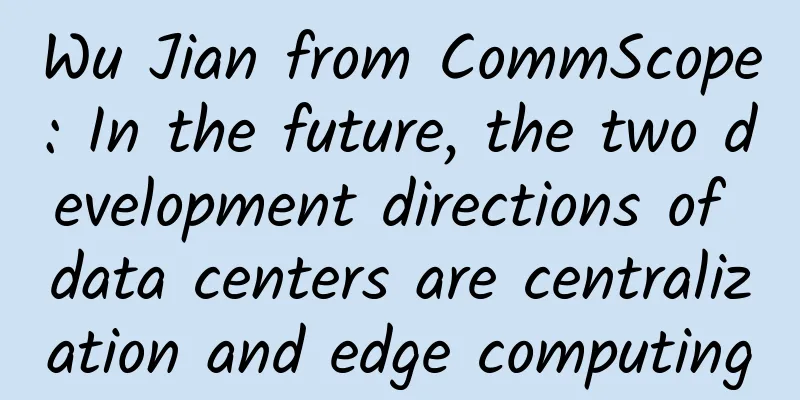To be successful in 2018, operators need to rely on these three strategies

|
The story of 2017 has come to an end. On the surface, the revenue growth of operators is not bad, and the highest revenue growth rate among the three operators in Guangdong is 4%. In terms of users, there are some highlights, such as scale growth and structural optimization. But behind the data, from our daily monitoring of the development of the communications market, we can still feel a hint of anxiety revealed by operators in operations and competition, and this feeling is becoming more and more obvious over time.
The Dilemma of 2017: Moving Forward in Anxiety Operators' anxiety comes from various sources. First of all, in terms of industry space, 4G development has reached the middle and late stages, and the advantages of early user upgrade dividends and traffic dividends are almost gone. The competition for the largest traffic has also fallen into a stalemate. The traffic that was originally regarded as the main driving force for revenue growth has begun to face a great depreciation. Operators are in urgent need of finding the next new revenue support point. Secondly, the high degree of homogeneity and low-end strategies in industry competition were particularly evident in 2017. Various competing products were highly similar and concentrated. Daily rental cards and 100% traffic products supported half of the user development, and the other half was basically filled by various Internet card products. When product design has lost its uniqueness and content filling is not in place, price war has become the most helpless choice, and marketing methods have returned to more "simple and crude" methods such as stall promotion and free card distribution. "Quick results" seem to have become the most direct way to relieve anxiety. The battle of 2017: "Cross-industry cooperation" and "second card slot" This year, operators have made many attempts to seek new ways out. Among them, embracing different industries with an open mind and conducting in-depth cooperation is the most noteworthy practice. For example, China Unicom, led by Tencent and other companies, jointly customized Internet card products, opening up a new way to develop users. This innovative development model not only brought a large number of new users to China Unicom, but also changed the previous development situation of large inflows and outflows, and the net increase in users turned from negative to positive. It is reported that the number of Tencent King Card users in the country has exceeded 50 million, and has become the main source of China Unicom's user growth. However, in the promotion of Tencent King Card, the operator's imprint was weakened, and more emphasis was placed on Tencent's advantages. Even in the ground promotion activities in some cities, China Unicom's LOGO was "banned" from appearing in the promotion booths. This cooperation is not so much a victory for China Unicom as it is for Tencent to be the ultimate winner. In addition, operators have also sought another new way out, which is to find incremental growth from the existing user market under the current situation of saturated user market. The product relied on for this way is the secondary card. "Main and secondary card sharing" was previously the main promotion strategy of telecom in the family market. In 2017, it became the main mining strategy of various operators in the personal market. The concept of "second card slot" was fully implemented this year, and its results were also gratifying: from the perspective of the national market, according to the number of China Telecom users disclosed in December 2017, it increased by more than 16% compared with December 2016 - this situation has not been seen for many years. In addition, China Mobile and China Unicom are also growing rapidly. In the Guangdong market, the combined customer scale of the three operators in 2017 also increased by 15% compared with the end of 2016. It is no exaggeration to say that among the approximately 24 million users that have increased throughout the year, nearly 10 million are from secondary cards. The driving force of secondary cards cannot be underestimated. Although the main and secondary card model can bring about user scale, it also has the negative effect of lowering user ARPU. For example, for users of Guangdong Telecom's unlimited data package, the ARPU of a main package user is around 123 yuan, while the ARPU of the secondary card user bundled together is only around 20 yuan. Overall, the average ARPU of unlimited data users can only be around 90 yuan. The user scale and user quality make operators entangled in the problem of "having their cake and eating it too". In addition to seeking incremental growth from existing stocks, operators will also strive to break through the refined market segmentation in 2017. For example, filling the blue ocean of the rural market, tapping the potential of employees in the government and enterprise market, and the special broadband needs of the apartment market. Represented by China Telecom's rural broadband strategy, the rapid advancement of mobile services with the help of flexible wifi products has led to a round of growth in the rural market. From the perspective of market development, when the mass market has been fully tapped and the saturation is very high, it is okay to turn around and start with segmented demand, make the "small and beautiful" market refined and thorough, and form a drip irrigation market filling. The concern of operators is how big the real potential of such a market is? How much energy should be invested in tapping the potential? Is the input-output ratio satisfactory? Compared with the ongoing market promotion work, the initial investment determination is the biggest knot. 2018: What new opportunities can break through In 2018, operators will still be anxious about the market and will continue to look for new opportunities to break through. In Celestron's view, although industry changes are accelerating and the focus of development is shifting, opportunities for operators still exist. 1. Internet of Things and Big Data These two have been recognized as future growth points, and the reasons are self-explanatory. The problem that operators need to face is how to convert these two obvious opportunities into actual profits. In the era of the Internet of Everything, the amount of revenue can no longer be determined by the amount of traffic. China Telecom has already changed the billing model of the Internet of Things to the number of connections, which is an effective change. In terms of big data applications, operators with natural advantages have also begun to use them internally, and at the same time package them into certain products or projects for external applications. But this is far from enough. In 2017, the revenue brought by the Internet of Things and big data accounted for a very small proportion of the operators' internal revenue, and the role of pulling revenue was negligible. Therefore, they are expected to usher in a new round of explosion in 2018. As for the way to explode, it is no longer enough to just make products. The possible entry point for operators will be in cloud-network integration projects. At present, it is more practical to expand the market based on industrial informatization and new integration service projects. 2. Content filling driven by traffic explosion Content filling was mentioned when the 4G era just emerged. When the network speed reached a new height and the traffic became more abundant, users' traffic consumption would be increasingly concentrated on video content. Now that 4G has developed to the middle and late stages, operators are becoming more and more aware of the importance of content, and have more mature ideas on how to win with content: not to do it by themselves, but to cooperate with other companies and form their own content ecosystem with content manufacturers. At present, the "taking advantage of the situation" of operators in traffic products is mainly focused on directional traffic, relying on the attractiveness of video website content to enhance the competitiveness of their own products. Another way is to "give membership as a gift", embedding the membership of the video website into the product package to give users more concrete rights and interests. Whether it is directional traffic or membership rights, operators need to have a strong tolerance and an open mind to discuss cooperation with content manufacturers. Compared with the impracticality of making content by themselves, win-win cooperation is the way for operators to win in content. 3. Channel transformation, especially the reuse of offline physical channels Perhaps stimulated by Jack Ma's "new retail" concept, or perhaps inspired by the content of the government work report that "promote the integration of physical store sales and online shopping", operators have consciously tried to transform offline physical channels into Internet integration development since the end of 2017, and will move from local pilots to full bloom in 2018. In this regard, we can learn a little about its specific practices from the "JD cooperation" model that China Unicom is currently piloting. This model is to transform Unicom's business hall into a Unicom-JD joint sales store, which can be operated by Unicom or contracted by agents. The products sold in the store are no longer limited to Unicom's own products, but also include JD's cooperative products such as mobile phones, computers, 3C products and even daily necessities, supported by Unicom's operating platform and JD's supply chain advantages. The cooperation between Unicom and JD can be regarded as a derivative of "mixed reform" and an attempt by Unicom to stimulate the vitality of offline channels. According to the monitoring comparison before and after the transformation of the business hall, the transformed joint store not only brings more traffic but also more sales. This seems to be a good start, and it is also an important basis for Unicom to promote the pilot model universally. Therefore, we have reason to believe that in 2018, the offline channels of operators will be rejuvenated under the drive of similar models. The above opportunities are not new, they are all things that operators are currently exploring, especially some directions that may have major breakthroughs in 2018. Competition in the communications industry is fierce every year, and operators seem to have a "bad time" every year, but fortunately, operators have always been fighting and creative, and they can always find new ways out of difficulties. I believe that this will be the case in 2018. |
<<: Speed up 5G trials! The three major operators are all full of enthusiasm
Recommend
Insight into the real mobile user experience of the "12344" of Borei Data App 3.0
【51CTO.com original article】 Nowadays, our daily ...
Don't call Riverbed just a WAN optimization company anymore. It's become something more.
[51CTO.com original article] Recently, Riverbed l...
VMISS newly launched Hong Kong international line VPS with 30% discount and annual payment starting from 10 US dollars, and you can choose US CN2 GIA/AS9929/CMIN2, etc.
A few days ago, we shared the information about D...
Industry rectification leads to closure of online storage
Another online storage company announced the clos...
GSA report: 63 operators around the world have launched commercial 5G services
The latest global 5G network development report f...
Comparison of IT industry salaries in 2021
There is a popular saying among job-hopping peopl...
Introduce the commonly used encoders and decoders in Netty
[[359182]] The previous article introduced Netty ...
Is your home WiFi secure? Beware of router attacks
WiFi has now been fully integrated into our lives...
5G promotes the transformation and upgrading of operators and expands new forms and models of information consumption
Recently, the website of the Central Commission f...
Ali Chen Haiqing: The future of intelligent human-computer interaction from Ali Xiaomi
[Original article from 51CTO.com] On July 21 and ...
2G will be completely withdrawn from the network next year, and there are still 273 million people who have not migrated. The general trend is inevitable.
2G will be completely withdrawn from the network ...
[Sharing] Project Practice of Network Automation: Scenarios, Tools and Solutions
[51CTO.com original article] Network automation i...
How 5G will revolutionize healthcare
Today, the development of 5G technology (fifth-ge...
What is the difference between unmanaged and managed industrial network switches?
There are two basic types of industrial network s...

![[Black Friday] RAKsmart cloud servers are 30% off, cluster servers are half price for the first month, flash sales servers start at $30/month](/upload/images/67cac22501dd5.webp)







